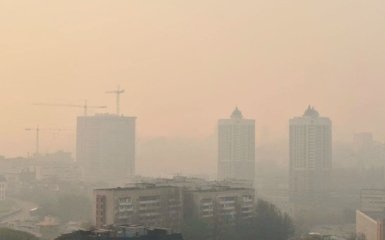A powerful dust storm has moved from Russia to Ukraine, so Ukrainians are advised to limit their time outside and close the windows.
Points of attention
- 1. A powerful dust storm originating from Russia has reached Ukraine, leading to a significant decline in air quality in multiple regions.
- 2. The dust storm is a result of an atmospheric vortex picking up dust and smog from Russia, along with forest fires in the region.
- 3. Ukrainians are warned to limit outdoor activities and protect their health due to the poor air quality caused by the dust storm.
- 4. Social media users share photos and videos displaying reduced visibility and unpleasant smells in affected cities.
- 5. Monitoring services indicate a drop in air quality index in impacted areas, posing health risks for sensitive individuals.
What is known about the dust storm in Ukraine
According to forecasters, a significant deterioration of air quality is recorded in the eastern and northeastern regions.
The air is most polluted by particles in the Sumy, Kharkiv, Poltava, Dnipropetrovsk and Mykolaiv regions.
It is noted that significant air pollution is associated with the pick-up of dust and smog from the territory of Russia by an atmospheric vortex.
Dust is brought to Ukraine from the Caspian Sea region, and smog from the territory of Russia, where large-scale forest fires are raging.
The southeast wind contributed to the spread of a mixture of dust and smog on the territory of our country.
Users of social networks publish photos and videos showing that visibility has significantly decreased in cities.
What is known about the reaction of Ukrainians
It is noted that residents of Poltava, Sumy, Kharkiv, Dnipro and a number of other cities have already complained about the significant deterioration of air quality and unpleasant smell.
Also, monitoring services show a deterioration of the air quality index in some of the areas covered by the dust storm. Air quality is currently acceptable, but there may be moderate health effects for some people who are extremely sensitive to pollution.
The arrival of the storm from the territory of Russia is confirmed by the Czech website Windy, which provides interactive weather forecast services. According to the data of the service, dusty air flows are moving from the Caspian Sea area, and covered virtually the entire left-bank part of Ukraine.

